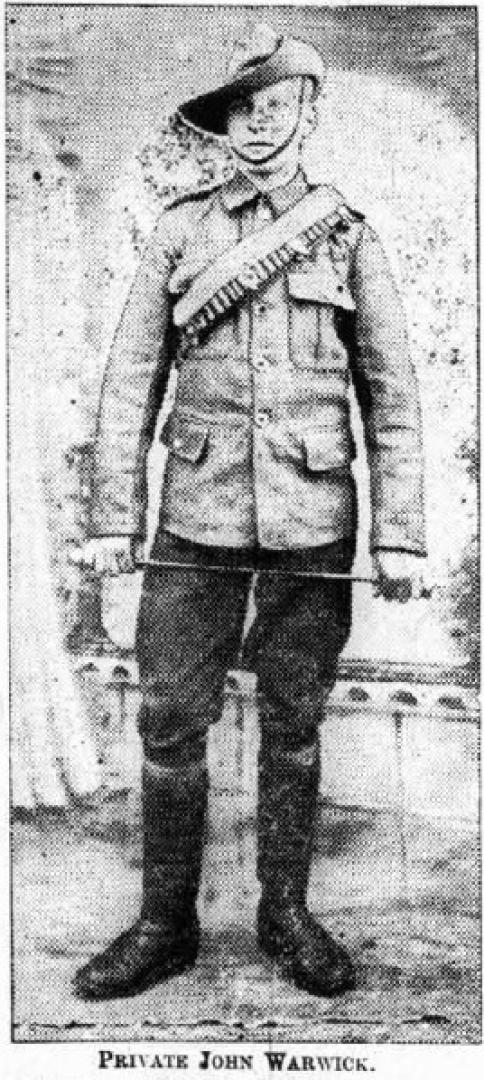“I ONLY did what any of our chaps would have done.”
This was the modest reply from a 1914 hero when he was lauded for retrieving wounded comrades from the line of fire.
John Warwick was born in Barnard Castle in 1885. In the 1911 census he is boarding, along with his wife Ada, at 38 The Bank and his occupation is given as flax dresser.
He was a talented footballer and played for West Auckland when the club side won the 1911 World Cup.
At the beginning of 1914 the couple moved to Darlington and John worked as a labourer at the Cleveland Bridge Company.
He had first joined the Army as a regular soldier in 1902, serving with the 4th Battalion DLI in F Company until 1906. He re-enlisted on September 8, 1914, and was assigned as Private 8757 with 2nd Battalion DLI.
In France he was quickly involved in the Battle of the Aisne. The advance northwards from the Marne was halted as the Germans dug in along the heights above the River Aisne. British attacks were repelled, and with both sides digging in this was the beginning of trench warfare.
In a letter to a Barnard Castle friend, (quoted in the Teesdale Mercury of October 7, 1914), Pte Warwick explained that on Sunday, September 20, he was entrenched 80 yards from the German line when at 6pm, Major Robb gave the order to charge the enemy.
When Lieutenant Twist was wounded, Pte Warwick and Pte Howson, also of Darlington, brought him out of the firing line.
Pte Warwick then volunteered to bring in wounded Pte Maughan. When they discovered that Major Robb was missing, John Warwick reports that he “crawled on my stomach, taking cover behind the dead, until I found him, shot through the chest. I waited until our artillery started up and with the help of a comrade called Nevison, half-carried and half-dragged the major through a rain of bullets to within 15 yards of our own trench” .
It was at this point that Pte Warwick was wounded in the back.
His letter was written from a military hospital in Manchester.
Lieutenant Twist and Pte Maughan survived, but Nevison and Major Robb did not. Pte Warwick was recommended to be awarded the Victoria Cross, but in the event, received the Distinguished Conduct Medal. The citation said: “For gallant conduct on September 20, 1914, at Troyon, valley of the Aisne, when he voluntarily assisted in the rescue of a wounded officer under heavy fire.”
Pte Warwick recovered from his wound and his medal record shows that he was re-assigned as Pte 45968 in the West Yorkshire Regiment and received a clasp to his DCM in 1920, which may be for long service or a further act of bravery.
In later years he worked at Glaxo. He died in 1956.
Judith Phillips
Roll of Honour project co-ordinator
The Bowes Museum







